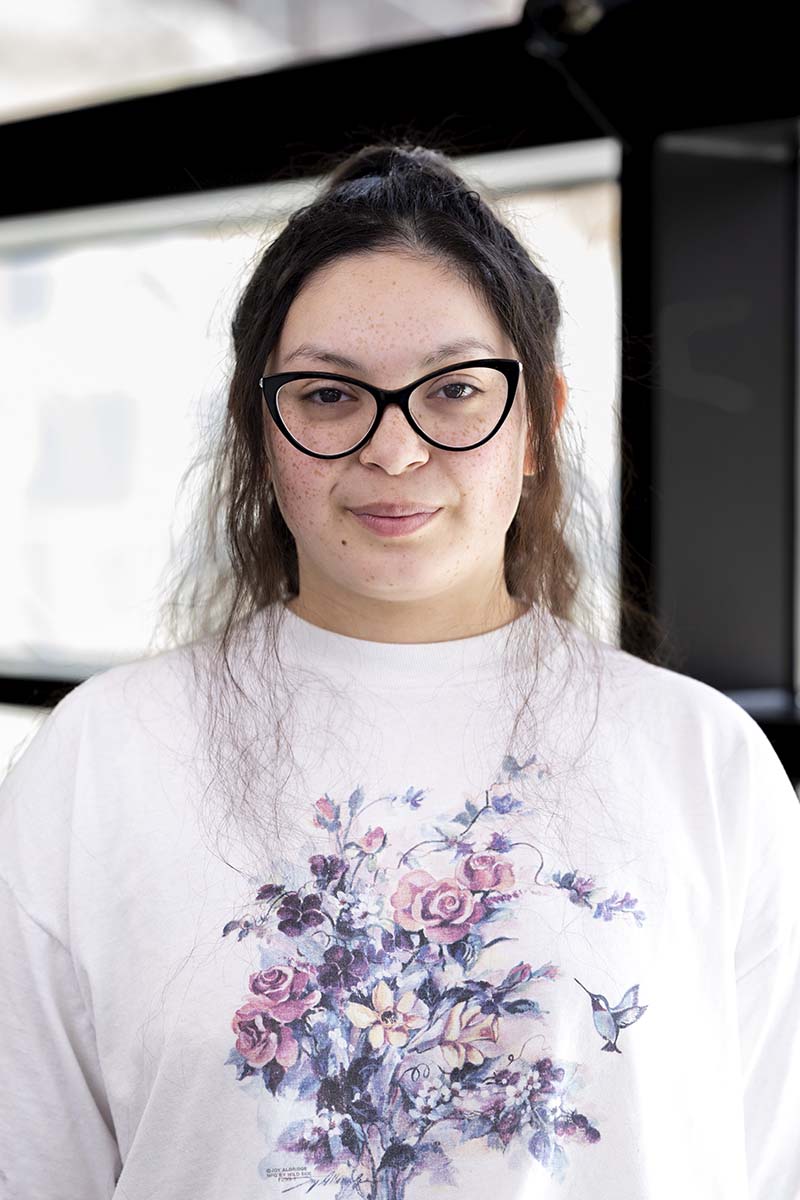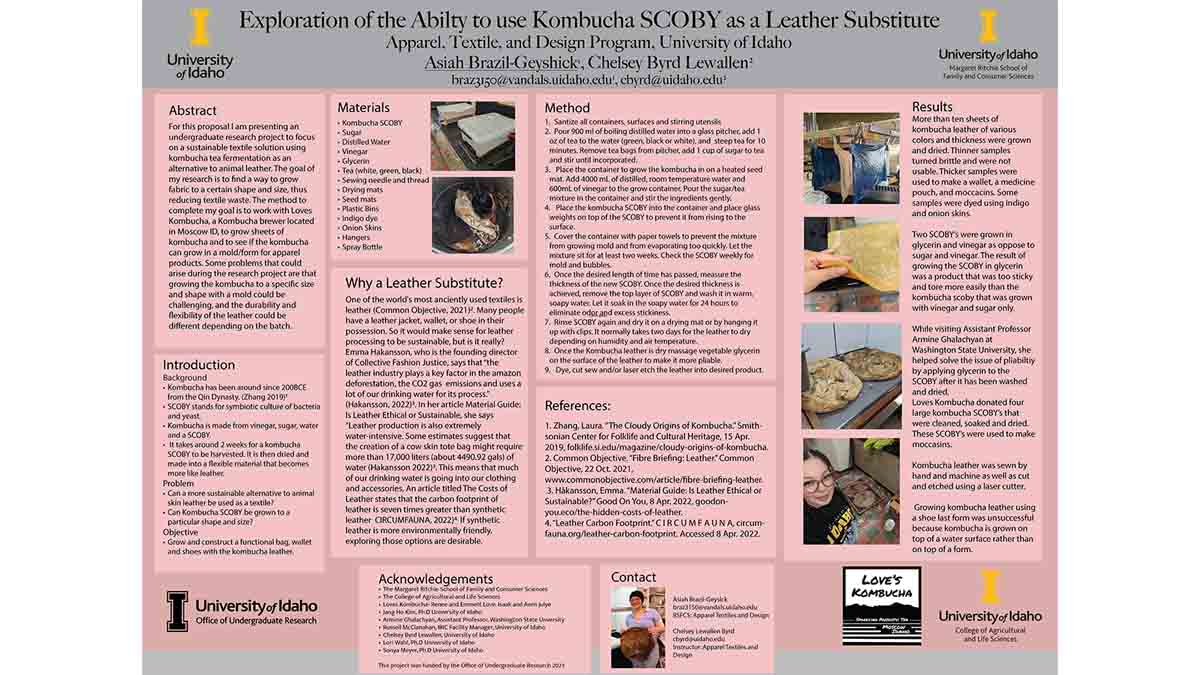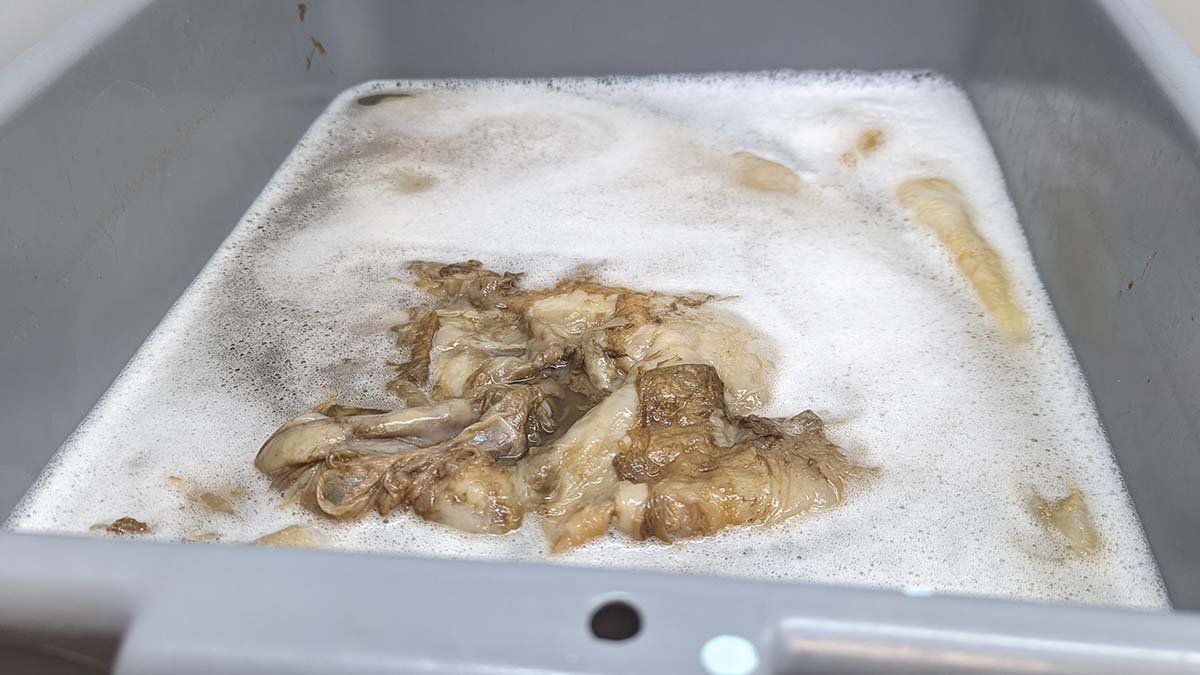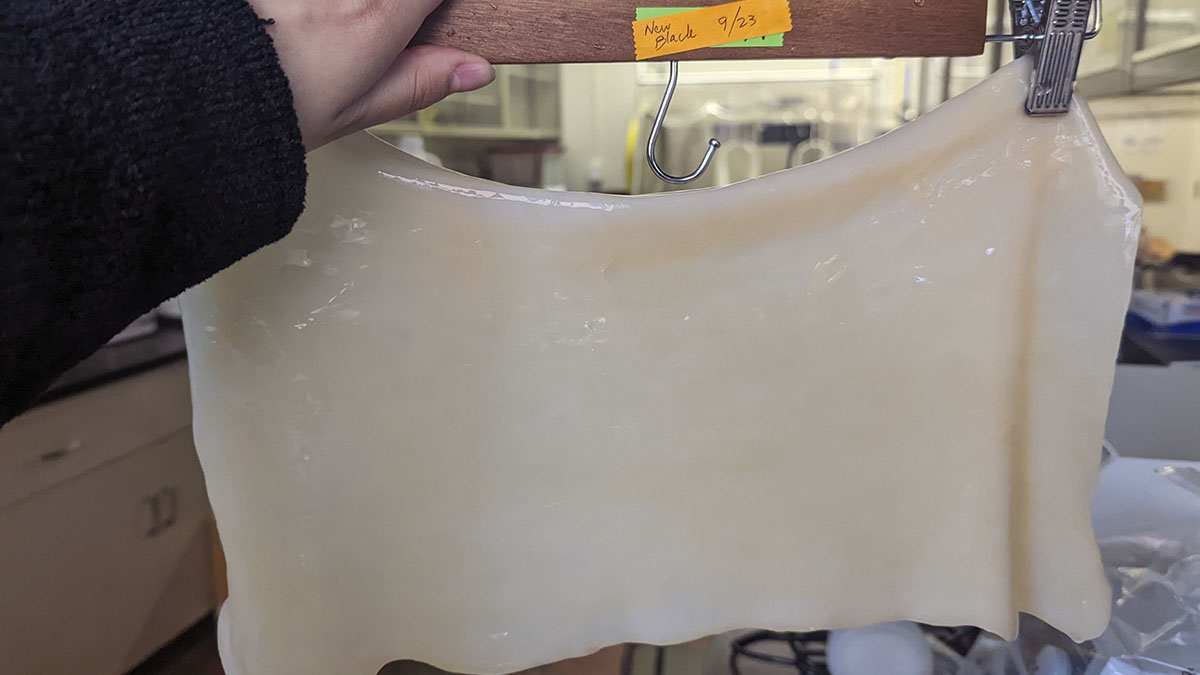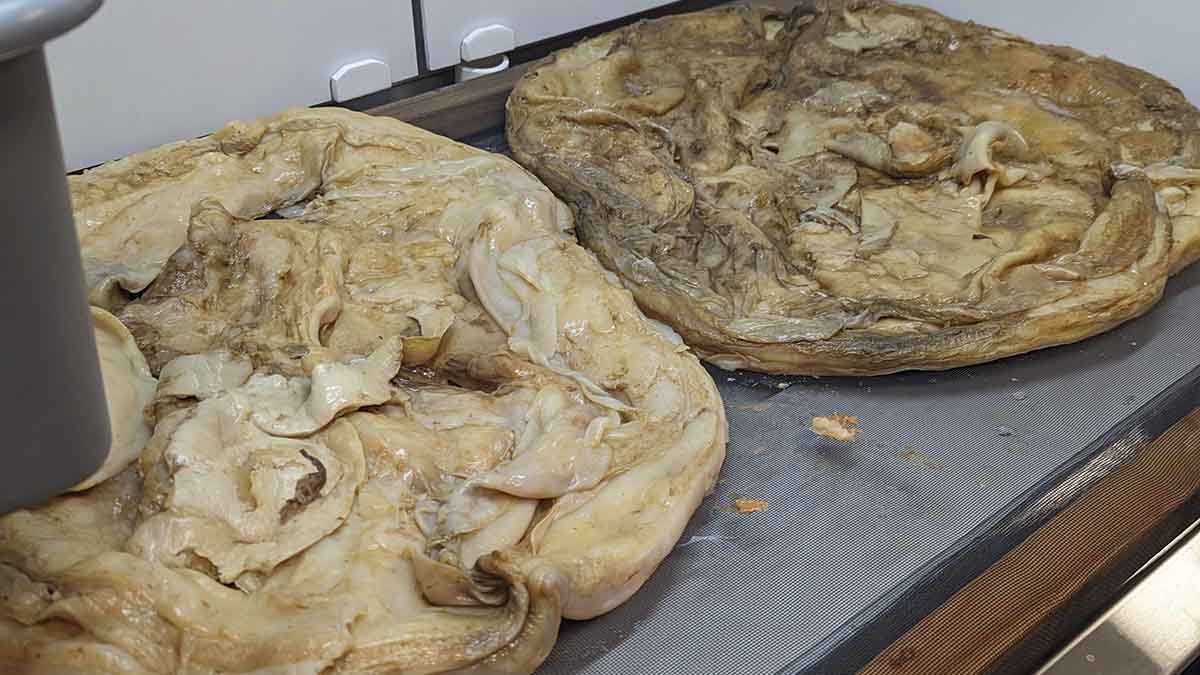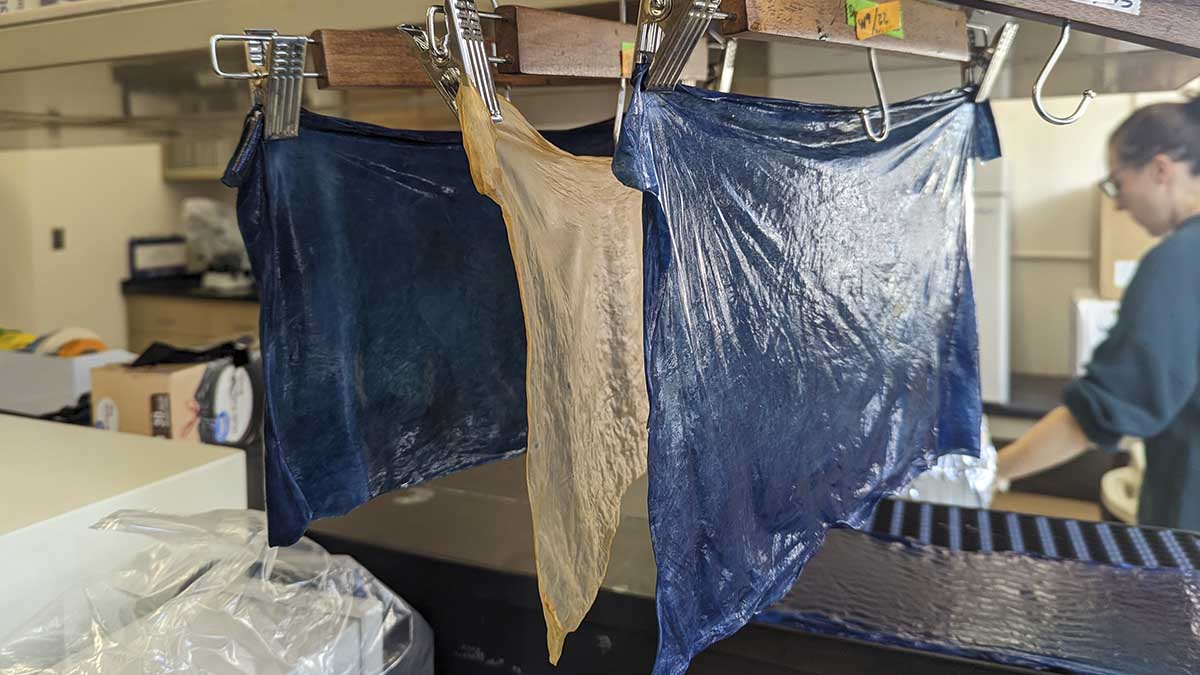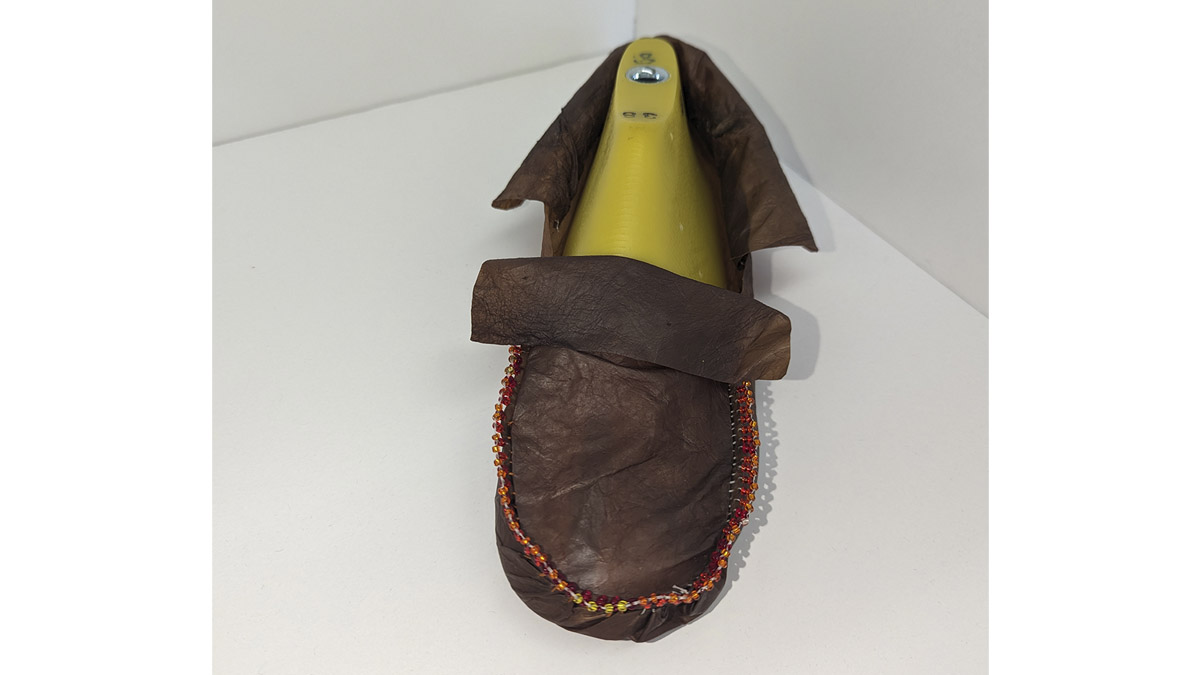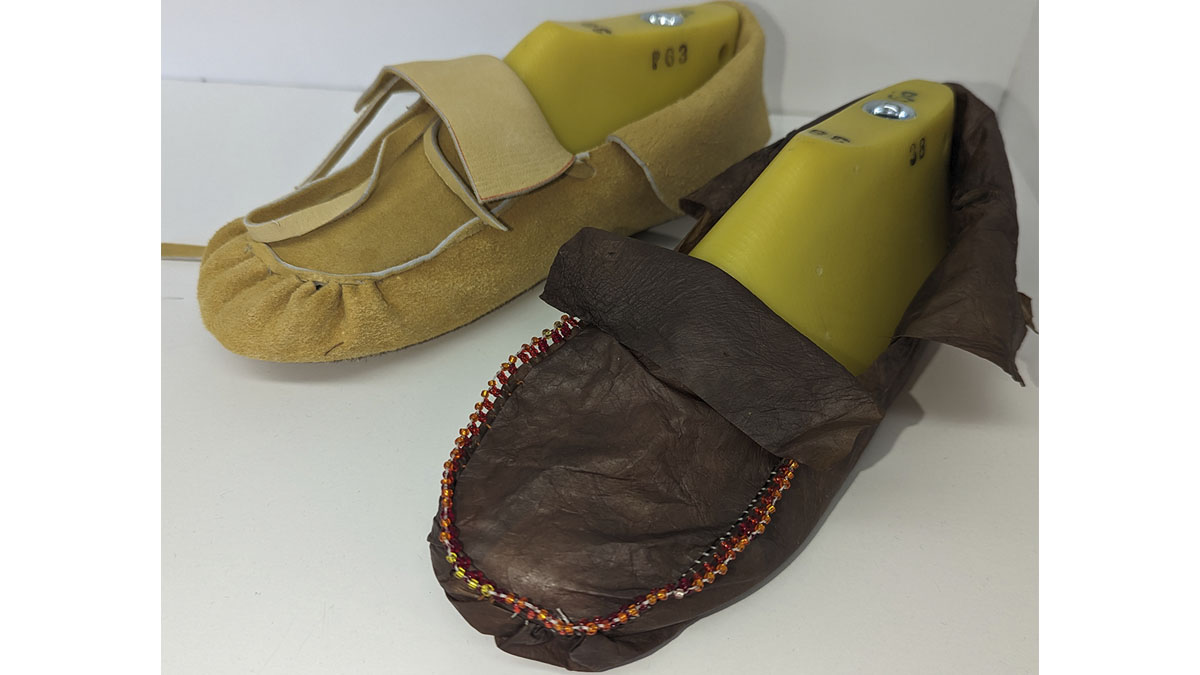Sustainable Fashion
Like most industries, sustainability is a hot topic in the world of fashion. As much as 8% of greenhouse gases and 20% of global wastewater annually can be attributed to the fashion industry, according to the United Nations.
A course at the University of Idaho inspired Asiah Brazil-Geyshick, a junior studying apparel, textiles and design, to investigate how she could play a role in reducing the environmental impact of the fashion industry.
Alternative Textiles
Leather is commonly used in the apparel industry for a variety of products but is often criticized for its negative impact on the environment. Leather production generates solid waste and industrial sewage at various stages of processing.
Fashion brands are looking into lab-grown biomaterials and plant-based leather as eco-friendly leather alternatives. Companies are trying everything from mycelium — the root-like structure of a fungus — to agricultural waste from plants like pineapple, apple and cacti.
Chelsey Lewallen, an instructor in the U of I Margaret Ritchie School of Family and Consumer Sciences, was discussing the environmental impact of leather during one of Brazil-Geyshick’s courses and mentioned current research into another biodegradable leather substitute — kombucha tea.
Brazil-Geyshick is a member of the Ojibwa people and leather is an important part of her culture. Lewallen asked if anyone was interested in conducting an undergraduate research project on kombucha and Brazil-Geyshick saw her opportunity to make a difference.
Kombucha Couture
For the past few years kombucha tea has been researched as a potential zero-waste fiber. Kombucha is made by introducing a symbiotic culture of bacteria and yeast (SCOBY) into brewed tea and sugar. The cellulose fibers of the SCOBY grow as a gel-like film that feeds off a mixture of vinegar and sugar.
Lewallen and Brazil-Geyshick sought advice from Armine Ghalachyan, an assistant professor at the Washington State University Department of Apparel, Merchandising, Design, and Textiles, for the project.
“Armine showed us samples that they had been working on and Chelsey went and saw their lab and their SCOBY culture,” Brazil-Geyshick said. “After that we got excited and went and bought all the stuff we needed to grow the culture.”
Brazil-Geyshick received an undergraduate research grant from the U of I Office of Undergraduate Research to conduct the project which kicked off in fall 2022. She began growing the SCOBY, seven bins at a time, and received SCOBY donations from Love’s Kombucha in Moscow.
She experimented by growing some SCOBY with just sugar and others with just glycerin. She also dyed some of the SCOBY using indigo and onion skins.
“I was thinking that growing it in glycerin would be a double whammy because the glycerin makes it more pliable and it’s also a sugar,” she said. “It didn’t work very well. Sugar makes it more durable and it’s hard to tear. When I grew it in just glycerin it tore apart.”
After the SCOBY reached a desired thickness, Brazil-Geyshick soaked it in a soapy solution for 24 hours to reduce the strong smell. She then put the SCOBY on a drying rack, which has proven to be the most difficult part of the process.
“It’s been drying to a crisp, which is a problem,” she said. “So I have to resoak it then redry it and come back later and it’s still a crisp. I’m trying to figure out how to dry it correctly so it’s not too dry.”
After the SCOBY is dried glycerin is applied to make it more pliable. The next step is to cut it into a pattern and sew a final product.
Brazil-Geyshick decided to honor her heritage by making a pair of SCOBY moccasins. Her mother makes moccasins as a hobby and helped Brazil-Geyshick make a leather pair using the same pattern as the SCOBY pair for comparison. She also made a SCOBY wallet and laser cut the emblem of her tribe on it.
Originally from Annadale, Minnesota, Brazil-Geyshick came to U of I specifically for the apparel, textiles and design program. Her experience here, including the undergraduate research project, has helped her discover where she wants her degree to take her. She will graduate in spring 2024 and has become more interested in patternmaking.
“When I was making the pattern for the moccasins, I was having so much fun,” she said. “Some of the classes I’m taking right now, digital patternmaking, I love that class so much. Participating in this project has already helped me to know what it would be like to research material. I’ve had a lot of fun trying to figure out what I want to make with it.”
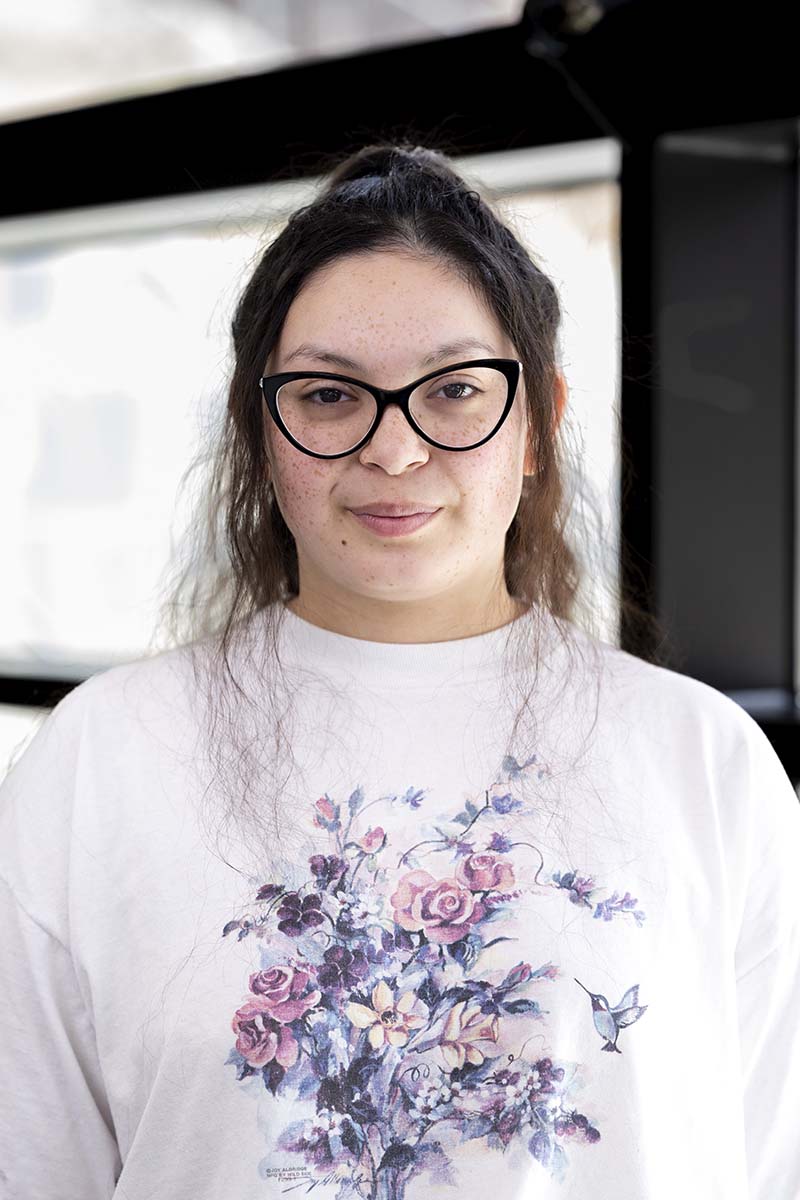
Article by Amy Calabretta, College of Agricultural and Life Sciences
Photos by Rio Spiering, University of Idaho Visual Productions
Published in April 2023







